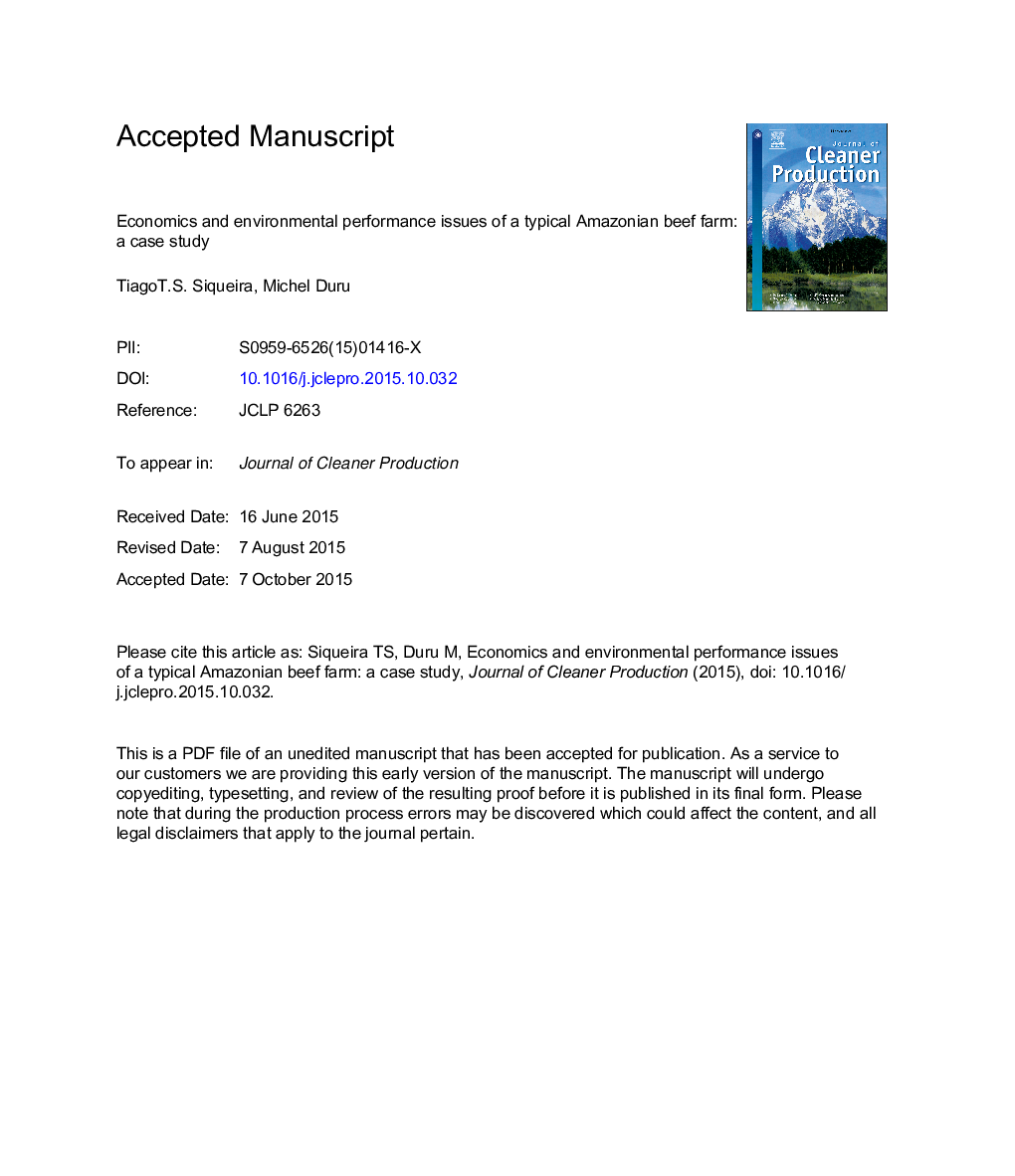| Article ID | Journal | Published Year | Pages | File Type |
|---|---|---|---|---|
| 10687837 | Journal of Cleaner Production | 2016 | 29 Pages |
Abstract
Concerns about land use change and the sustainability of beef production are increasing around the world, particularly in the Amazonian region. We intend to improve understanding of economic and environmental issues of a typical Amazonian beef farm at the farm level. We use production cost and profitability analysis to assess farm economics. Through an original approach, we assessed greenhouse gas (GHG) emissions using a Life Cycle Assessment model to integrate land-use change (LUC) and Soil Carbon Storage (SCS). We show that beef farms are profitable only in the short-term. The main hotspots are land opportunity cost and livestock costs. The largest source of GHG emissions from beef production (15Â kg CO2 equivalents per kg of live weight produced) is from enteric fermentation (83%). LUC emissions can double the impact of GHG. Therefore, forestland preserved on Brazilian farms is an important sink of SCS that can compensate for all farm GHG emissions. Based on the literature, we conclude that economic failure and the substantial GHG emissions are related to the low productivity of animals and land.
Related Topics
Physical Sciences and Engineering
Energy
Renewable Energy, Sustainability and the Environment
Authors
Tiago T.S. Siqueira, Michel Duru,
